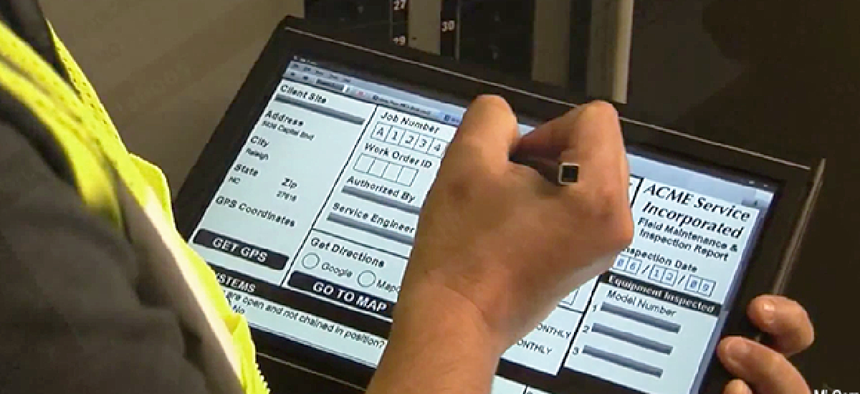Mobile smart form speeds transportation research


Connecting state and local government leaders
The Transportation Department is turning to mobile smart form technology to help move critical traffic safety information to analysts faster and more efficiently.
The Transportation Department will use mobility and smart forms to modernize its field data collection system at its Volpe National Transportation Systems Center. DOT says upgrading its data collection system will help the transportation research center move critical traffic safety information to its analysts faster and more efficiently.
In February, DOT awarded Mi-Corporation (Mi-Co) a contract to adapt its Mi-Forms software to the department’s specs, which include accurate handwriting recognition, off-line data capture and validation and an ability to secure data in transition to mobile devices, according to a solicitation on FedBizOpps.
The center studies about 5,000 crashes each year and uses the results to assess overall traffic safety, the crash performance of various vehicles and crash-related injuries, according to the National Highway Traffic Safety Administration.
“We’re excited about this project,” said Greg Clary, co-founder and chief executive officer of Mi-Co. “We feel like it’s another way to have a positive impact in the world by helping DOT to make our roads a safer place … by helping them do the research more easily, quickly, accurately.”
The project calls for Mi-Forms to be downloaded onto Microsoft Windows tablets – DOT’s device of choice – that field officers take with them to crash sights, salvage yards or their offices. They open the program and start collecting data, such as handwritten information that is converted into computer text, measurements of damaged areas, Global Positioning System coordinates, sketches, photos, barcode scans and voice recordings.
The software enables some information to synchronize automatically to the mobile device. For example, once an agent enters a vehicle identification number, fields such as vehicle make and model populate automatically. “Nobody wants to re-enter information that’s already known,” Clary said.
Additionally, Mi-Forms users can customize their requirements to ensure accuracy and thoroughness. “Another big accuracy factor is the logic checks that can be built into the form, so required fields have to be completed or the form can’t be completed,” Clary added. “Consistency checks can be done as somebody enters a driver’s license number and a birth date. They can go look up the state and make sure this person was really old enough to drive. There’s a lot of checking that the computer can do and really make the forms truly smart.”
The information is encrypted and stored on the device until the agents submit it to one of two NHTSA collection centers. If they are working in areas with spotty or no connectivity, an agent on the device scans for a connection and submits the information automatically on reconnection.
“When the encrypted transmission is made to their server, Mi-Forms deletes the data [from the device] for maximum security,” Clary said.
The handwriting recognition capability lets users input data by writing with their fingertip, a stylus or a keyboard. “We allow people to write in free-form, unconstrained fields in their natural style, which obviously can be a mixture of cursive or print, and we achieve about 80 to 90 percent word accuracy in those natural-style fields,” Clary said.
“We also allow the system to be constrained with boxed character recognition, so if people are printing in boxes we can see a much higher recognition accuracy – 95 to 98 percent – at the character level.” Users can also mark up photos and make free-form diagrams with a pen, he added.
Mi-Forms works on any device equipped with an HTML 5-compatible browser and Windows 8.1, 8, 7 or Vista. It integrates with dozens of storage systems, including Oracle, SAP and Microsoft SQL, which DOT uses. Local data storage is limited to the capacity that comes with the device.
Mi-Co’s solutions cost $50,000 to $750,000, depending on the number of users, Clary said. “Most commonly, we produce a complete return on investment within six to eight months of go live,” he added. Another government customer studied the time savings associated with using Mi-Forms and found it took one-third as long for raw and verified data collection, he added.
NHTSA and Volpe workers are continuing their testing phase with a target of going live early next year.
Other areas of government are already putting smart forms to use. The Structural Pest Control & Pesticides Division of the North Carolina Department of Agriculture and Consumer Services uses Mi-Forms for data collection. And abroad, Australia’s government has been using smart forms since 2005 to help agencies build, host, manage and collect information from their customers.
NEXT STORY: Air Force seeks media-simulating training tool




